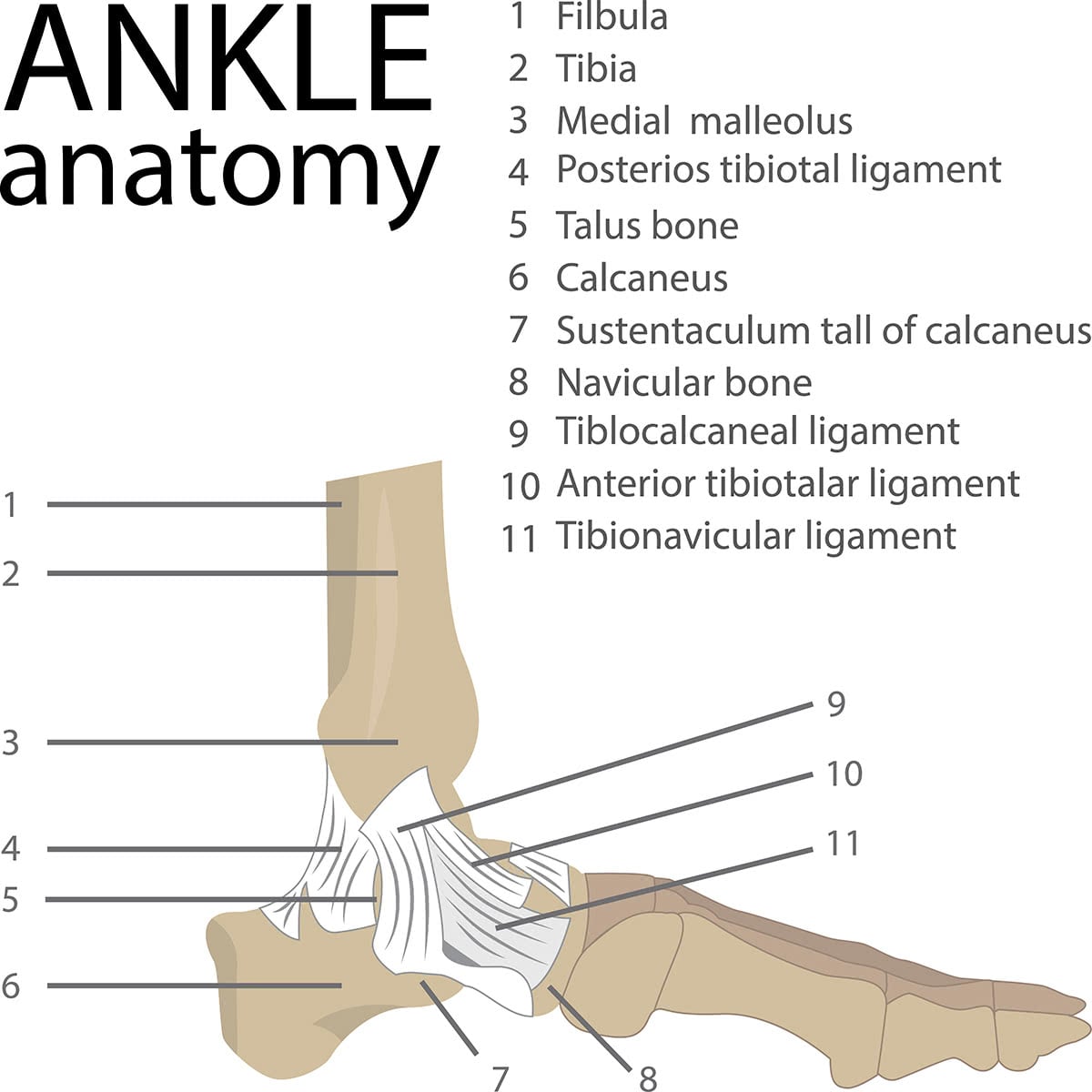The anatomy of the foot and ankle is quite complex and comprises 26 bones, 33 joints and over a hundred muscles, tendons and ligaments.

The foot
Although not as flexible, the bone structure in the foot bears some similarities to the bone structure in the hand, tailored to its role of bearing the full weight of the body and allowing movement.
The ankle
The ankle joint has to take the full weight of the body and any extra force exerted while walking, running or jumping - acting as a form of shock absorber - while also allowing the foot its full range of motion.
The ankle in fact is made up of three separate joints…
- The talo-crural joint, which controls the extension of the foot.
- The sub-talar (or ‘talo-calcaneal’) joint between the talus and calcaneus bones (see below), which controls side rotation of the foot.
- The inferior tibiofibular joint (sometimes called the ’syndesmosis joint’), which is a ligament joint between the tibia and fibula bones in the calf.
From an anatomical perspective, the foot is divided into three sections…
The Hindfoot
This is the section attached to the ankle, and includes the ankle itself (the ankle bone is called the ‘talus’) and the heel bone (called the ‘calcaneus’).
The Midfoot
This section is the primary ‘shock absorber’ part of the foot. The bones in this section are arranged in a pyramid shape and form the arch of the foot. The bones in this section are: the navicular (meaning ‘shaped like a boat’) bone, the cuboid (i.e. cube shaped) bone and three cuneiform (which means ‘wedge shaped’) bones.
The Forefoot
The bones in the forefoot - of which there are 19 - are made up of the 14 bones in the toes themselves (the ’phalanges’) and the five bones connected the phalanges to the midfoot, known as the ‘metatarsals’.
In addition, the terms ‘dorsal’ and ‘plantar’ refer to the top side of the foot and the sole respectively.
The muscles of the foot and ankle, of which there are more than twenty, are divided into the ‘intrinsic’ muscles, which are in the foot itself, and ‘extrinsic’ muscles which connect the leg to the foot. These extrinsic muscles include muscles in the calf - the gastrocnemius, the largest calf muscle which bends the knee and extends the foot, and the soleus muscle which flexes the foot down. As well as controlling movement in the foot and ankle, the muscles in the foot also maintain the arch structure.
Tendons attach the intrinsic and extrinsic muscles to the bones in the foot and finally ligaments are the bands of fibrous tissue that connect one bone to another and provide stability of movement. The ankle for example has 11 ligaments around it for this purpose.
Other important components of foot and ankle anatomy include…
Cartilage
Articular cartilage is present where each bone joins to the next one and allows smooth movement while also serving as shock absorbers.
Nerves
The sciatic nerve connects the spine to foot. It is the largest nerve in body and connects a range of muscles from the buttocks (the gluteal muscles), the leg muscles and all muscles in the foot back up to the spine.
